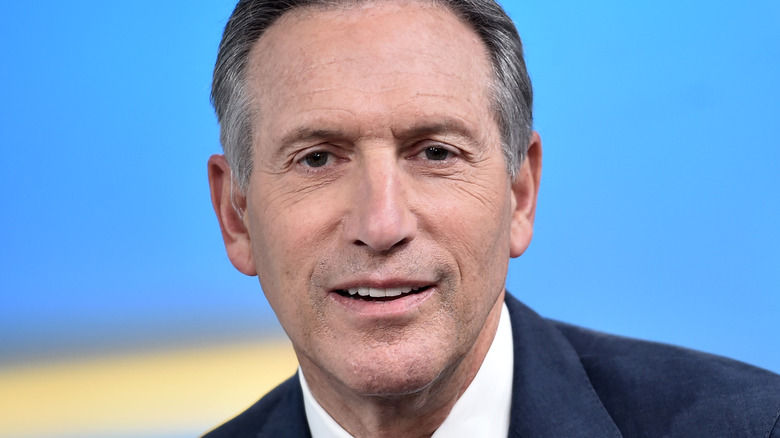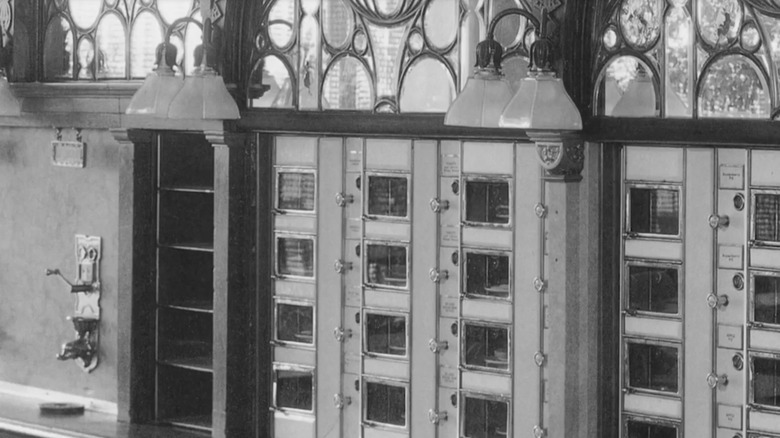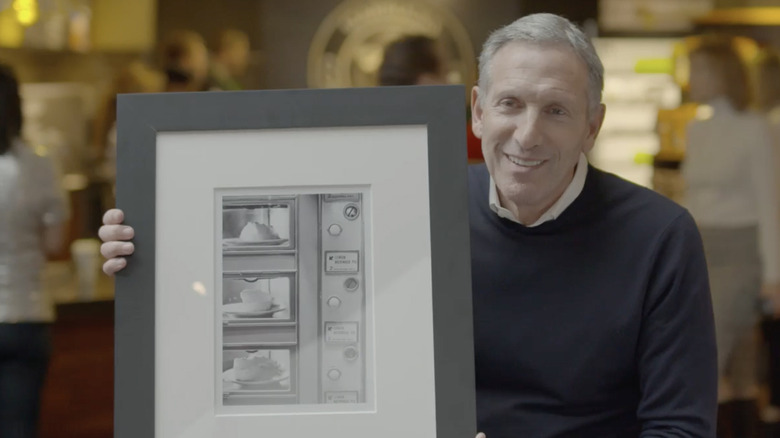How The Automat Inspired Howard Schultz's Vision For Starbucks
Automat eateries may be a mystery to those living outside the Northeast. But countless childhood memories of these restaurants lived in the hearts of an estimated 800,000 people who frequented Automats each day, per 6sqft. Sometimes referred to as "dining on a dime," the sleek, futuristic cafes predated fast-food outlets, with the first New York Automat opening in 1912. More than 50 years later, a young boy from the Brooklyn housing projects stumbled with awe through the doors of an Automat and credits that experience with changing his life, reveals CNN. That boy was Howard Schultz, the founding father of Starbucks.
The food at Automat venues magically appeared through coin-operated vending machines, with no servers and no visible chefs, only young employees in coin booths exchanging dollars for nickels, dimes, and quarters, explains ThoughtCo. The pie, sandwiches, mac and cheese, and hot coffee suddenly appearing from endless glistening machines lining Automat walls enthralled patrons and provided much-needed affordable food for working-class New Yorkers. People from all walks of life fondly reminisce about days and nights at the Horn & Hardart Automats, from actors to activists, bankers to longshoremen, families, and future leaders of the free world. But only one, Howard Shultz, says it inspired his vision for what is now the largest chain of upscale coffee shops in the world.
Brass, marble, and nickel throwers
In a documentary appropriately titled "The Automat," Howard Schultz speaks of his first awe-filled entry into an Automat eatery, which the Washington Post describes as lavish, especially considering food prices equaling a mere handful of coins. In fact, items in the first Automat cost only one nickel each, and the woman exchanging the dollar bills was called the "nickel thrower," according to "The Automat" documentary filmmaker Lisa Hurwitz in an interview with Our Town. The hot coffee remained at five cents for many years. The design mimicked Italian baroque sculptures and gleamed with brass, chrome, and marble — in spite of its typically humble clientele, particularly during the Depression era.
According to CNN, Schultz had attended a production of The Radio City Rockettes in 1963 when his aunt treated him to a meal at the nearby Automat. The delightful surprise of the Automat experience, coupled with the lingering theatrics of the Rockettes, created a magic that his aunt couldn't resist encouraging, telling Schultz that a magician lurked behind the machines, dispensing the food through mystical powers. Schultz credited that day with sparking a passion for merging romance, theater, and retail, and said in "The Automat" documentary that he became a merchant the day he was in that Automat.
The magic of diversity
There may be something to that magic, with future luminaries ranging from Ruth Bader Ginsberg to filmmaker Mel Brooks touting the creamed spinach and baked beans tumbling out of gleaming glass doors. But the equalizing ambiance created more than warm food and a place to hang out — it also served as a melting pot of diversity, somehow evading even the stigmas of classism and racism running rampant in the mid-20th century. Future military leader and Secretary of State Colin Powell stated that he never hesitated to enter an Automat in Manhattan despite being a black boy from the South Bronx, according to the Wall Street Journal.
Ginsburg noted the diversity as well, saying that the great U.S.A. was represented in the daily comings and goings of people of all colors, religions, and manner of dress. Whether the open environment of the Automat also influenced Schultz as he opened thousands of Starbucks locations in diverse communities across the globe, we may never know. But he did dedicate one of his memoirs to the Automat, explains Hurwitz to Our Town, and kept a framed photo in his Starbucks office featuring a slice of Automat pie behind its glass door.


